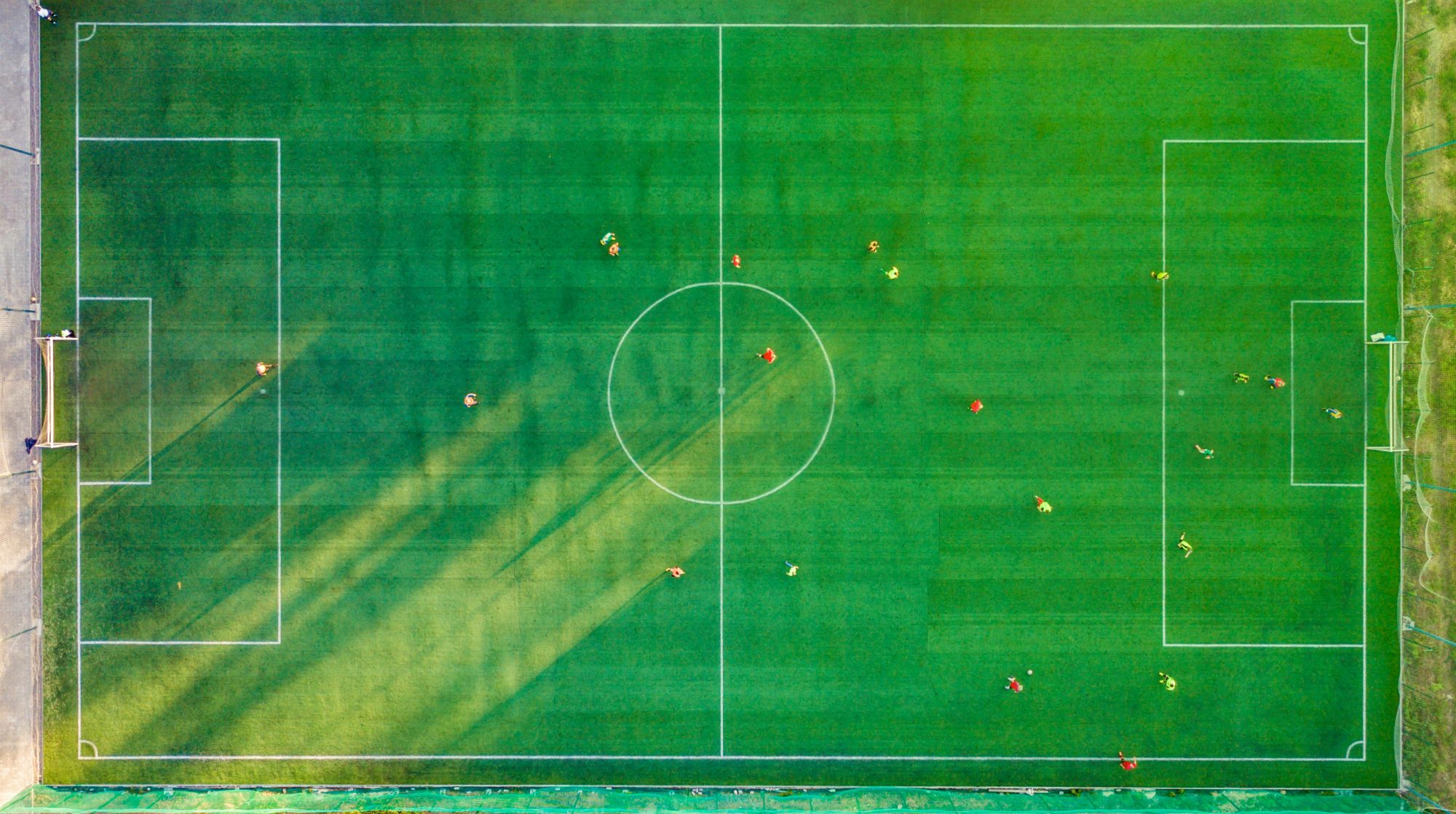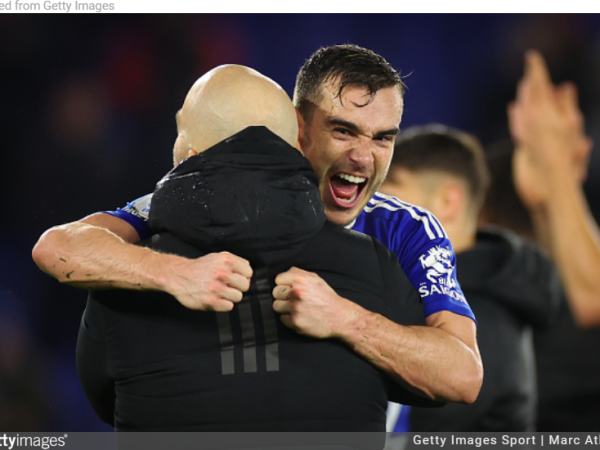Charlie Ellis and Rhys Desmond
Despite all the hype surrounding Mauricio Pochettino’s arrival at Stamford Bridge and a host of new young prospects to excite the fanbase, Chelsea have more or less continued where they left off last season. That is, providing an underwhelming start to the 2023-24 campaign, currently sitting in 12th place.
Embed from Getty ImagesMany will point to the underlining numbers and their performances on the pitch as a signal of positive things to come for the Blues. But the actual numbers they’ve produced so far have not been up to par with what we’d expect from a team with such a star-studded squad. With that, we analyze Mauricio Pochettino’s Chelsea, and suggest where they need to improve in order to get back into the race for European football next season.
SYSTEM OF PLAY: 4-2-3-1
Embed from Getty ImagesOn paper, Mauricio Pochettino’s Chelsea could be considered to be something of a 4-2-3-1 to 4-1-4-1. The midfield triad of Conor Gallagher, Enzo Fernández and Moisés Caicedo have more than enough steel and gusto to provide a well-oiled balance in midfield, but still something feels off within the construction of the team. Gallagher will most commonly be the advanced player in the system stepping up with the press, but Enzo will also make his mark in advancing forward more than we’ve seen in previous systems.

Ideally, Moisés Caicedo, Enzo Fernández and Conor Gallagher would all be playing a ‘number 8’ role, somewhat resembling a box-to-box midfielder. They each have more than enough quality to offer mobility and pizzazz in attacking phases, while also providing the necessary defensive steel going the other way. Caicedo’s been the one needing to adjust as a result, operating in that holding role as the other two have more license to go forward.

In attacking phases, one full-back will typically advance into the attack as the other one stays put. This can sometimes give the look of the team more of a 3-2-4-1 shape, with creativity coming from the wide areas.

At times, this has been a bit confusing for fans watching on. Particularly in Pochettino’s early days at the club, players were being asked to play in roles outside of their normal comfort zones. Ben Chillwell operated in an estranged left-wing to left-wing-back hybrid role, with Levi Colwill pushed out onto the left of a back-four in the process. Conor Gallagher also spent time playing as the ‘6’ before Caicedo’s arrival, with the normal ‘6’ in Enzo Fernández pushed ahead.

For all the experimentation in his early days, Pochettino has settled on more of a consistent look in the team in recent weeks. He’s recognized Gallagher’s perpetuation toward pressing from the front and utilized that power in an advanced role; and he’s found a decent connection between former City wingers Raheem Sterling and Cole Palmer. Nevertheless, it’s still not clicking. And it’s still not clicking even despite boasting one of the most impressive squads in the league.
Embed from Getty ImagesStarting at the back, summer recruit Robert Sánchez has been a bright spot for the Blues, making for one of their smarter signings at a price of just £25 million. His bravery when playing out from the back stands out, launching just 21% of his passes, and completing a decent percentage of those attempts (41%) when going long.
Embed from Getty ImagesIn front of him is the other man to have played nearly every minute, Brazilian veteran Thiago Silva. 39 years old now, Silva continues to perform at a high-level in every phase, acting as a key leader for the team on and off the pitch. It may however be time to pass the mantle over to former Monaco pair Axel Disasi and Benoît Badiashile, both of whom look ready for the big time. Then there’s Levi Colwill, who may have the highest ceiling of all, but continues to be pushed out to the left for the time being.

That may be because Pochettino doesn’t fully trust former Brighton man Marc Cucurella, or sees more attacking potential ready to be harnessed in Ben Chilwell. Pochettino has however found a good pair of fullbacks to use on the right, with his captain Reece James complimented by a capable understudy in Malo Gusto. This is where much of the creativity in the side comes from, with both Gusto and James forming a nice partnership with either Raheem Sterling or Cole Palmer down the right-hand side.
Embed from Getty ImagesBoth former City boys have lit up Stamford Bridge so far this season with 13 goals + assists between them. Palmer has been more effective collecting the ball deeper to play penetrative passes in behind, whilst Sterling’s progressive dribbling has been off the charts, with more goals inevitable as the season boils on.
Embed from Getty ImagesNicolas Jackson has also been a bright spot for the Blues, complimenting Sterling’s powerful running in behind with his incisive link-up. Jackson is yet to fully find his stride in front of goal, although he’s made his mark scoring the easier finishes and thrived off being more of a penalty box poacher despite all the quality he offers on the ball.

RELATED: Game of Numbers #33 – Nicolas Jackson & the art of extra touches to score goals
The last decade has seen many strikers struggle for confidence at Stamford Bridge, but fortunately for Jackson, he’s being coached by an Argentine who mentored one of the greatest goal-scorers of all time in Harry Kane. If the Senegalese can become a prolific finisher, it will add one more string to his extensive bow.
Embed from Getty ImagesSo with so much quality around the pitch, it’s still confusing to see where and why Chelsea have struggled to find their best form. Very few of their summer signings have failed to work out, and most of them have actually hit the ground running. So why are things still amiss?
Attacking Principles

Starting at the back end of the pitch in possession of the ball, Chelsea have struggled to hit the mark we’d expect from a Pochettino side playing out from the back. They often look disjointed, and threatened when faced with tough pressing units.
For most sides playing out from the back, they thrive off close connections and short one-two touch passes around the pitch, on top of positional rotations and smart switches of play across the pitch. For Chelsea however, we haven’t necessarily seen any of those qualities take form.
Embed from Getty ImagesThe distances between players have often become too much, and there don’t appear to be enough automatisms around what they are looking to accomplish when playing the ball around. Their players then lack the same cutting edge pattern recognition that a side like Brighton or City have in playing out from the back.

Placing Levi Colwill as an extra member of the defense should in theory promote better build-up out from the back. Placing Enzo Fernandez higher up the pitch means they may lack that stellar sense of control in the pivot position at the top of the build-up diamond. But Caicedo had plenty of exposure playing in pressurized situations at Brighton, and offered an underrated eye for a pass. There’s no reason to suggest that he’s incapable of playing that deeper-lying role for the Blues.

Then there’s players like Thiago Silva and Benoît Badiashile who are completely comfortable commanding the ball and playing passes for fun. Even Marc Cucurella offers plenty of poise in possession. It’s what made him such a competent performer at Brighton. So what’s wrong?
Embed from Getty ImagesOne of the key issues is that they have a tendency to go long too soon in their moves. They’ll work the ball nicely between the centre-backs and Sanchez, but then lack adequate short options to play further passes ahead, and opt for the riskier longer pass. Perhaps it’s a lack of trust in players like Gallagher to play under pressure with their back to goal, or maybe it’s a lack of clear automatisms around how to escape those pressurized moments.

Given the quality Nicolas Jackson offers on the ball, perhaps it’s just about shrinking the distances between all players through the thirds, and increasing the variety of movement and rotation that can occur as they move toward the ball. It doesn’t have to be incredibly elaborate. But the movement of players like Gallagher and Enzo toward the ball will naturally drag defenders and open more space for those longer, riskier passes to actually come off. Rather than remaining a bit pedestrian with their movement and allowing themselves to be marked, there needs to be more intention toward dismarking to allow for either shorter connections, or the ability to play those longer passes at the right moments.
Further up the pitch, Chelsea create that 3-2-4-1 shape, sometimes shifting into a 3-1-5-1. This can correlate to how many defenders the opposition have in the final line, aiming to cause an overload in the final third, creating a free man to attack goal.

In creating that shape, it’s often one winger that will invert as the other remains wide. Usually it’s the right winger to invert as the right-back gallops up the pitch. But if playing Palmer and Sterling together, you may see the Blues narrow the pitch altogether and forego maximal width at times.
In some ways, this has allowed for some nice interchange in the ways that the Blues have lacked out from the back. Sterling thrives in tight spaces, and completes a high number of carries to break defensive lines of pressure in the final third. As either he or Palmer attracts the pressure, James or Gusto can gallop into space and prepare to cross.
Embed from Getty ImagesNicolas Jackson offers similar advantages in helping to free up Raheem Sterling himself. Jackson’s great with his back to goal and loves to carry the ball forward. This can often give Sterling more space to receive away from pressure. In fact, the presence of Jackson and his ability too powerfully hold off defenders might be one of the key reasons we’re seeing Sterling thrive in ways he struggled to find last season.

The Senegalese striker has a tendency to do too much on his own and strike from less than ideal positions. But he’s thrived in the box when others have been able to create the right chance for him to pounce.
We must also remember that Conor Gallagher offers a goal threat too, even if he’s yet to hit the mark this season. Once upon a time the Chelsea man hit 8 goals for Crystal Palace on loan, thriving off the same kind of crosses into the box that Jackson has made his own for the Blues. With greater proficiency of runs into the box and an increased chemistry with Jackson over time, we may see the best out of Gallagher’s attacking proficiency once more. For now, he’s actually played more of a creative role, assisting four goals and even taking some set-pieces.

It’s actually Enzo Fernandez who’s managed to find more spaces to tear opposition sides apart in the final third, with the Argentine ranking second in the side for shots per 90 (2.04 to Jackson’s 3.11). Enzo’s got a mean strike, but he’s not the most prolific in front of goal and often striking from outside the eighteen. If the Blues can remain more patient in working the ball wide and then putting the ball into the penalty area at the right moment, a player like Gallagher may thrive all the more.
Embed from Getty ImagesSo key for the Blues will be establishing consistency and chemistry within their attacking ranks, increasing unpredictability, and ensuring they take shots on at the right moments. They’ve maintained their set-piece prowess with the likes of Badiashile, Disasi and Thiago Silva imposing themselves in the penalty area, but finding the optimal balance within that midfield three should unlock greater attacking potency come the second half of the season.
Defensive Principles
Embed from Getty ImagesOut of possession was never the greatest issue for the Blues last season, and they often received praise for the way they handled themselves in defensive phases even despite a lack of goals going the other way. They conceded an average of 1.2 goals per game last season to end with a -9 goal differential. This season they’ve pumped more proficiency in the attack to boast a net 0 goal differential, but have conceded more – 1.6 times per 90. So there’s still some things to sort on the defensive end too, especially in ensuring their attackers don’t have to score bundles of goals per game.
Starting from the front, the Blues will often defend in a 4-4-2 shape, with Gallagher urgently stepping up to press.

The British midfielder runs with electricity bursting through his boots, and excels in forcing mistakes out from the back. Raheem Sterling and Cole Palmer have plenty of pressing exposure from their days at City, while Nicolas Jackson boasts similar rates of exertion. Then sitting in behind, you have two combative midfielders in Enzo and Caicedo, and burly defenders capable of commanding 1v1’s at the back. It should be a tough side to break down.
Embed from Getty ImagesManaging their effort levels, Chelsea resist pressing aggressively from any position. Instead, they are more intelligent in their ways, delaying and waiting for the opposition to pass themselves into a vulnerable position. That is when the likes of Gallagher or Enzo can step and pounce, forcing the ball long for their aerially dominant centre-backs to regain possession.
Embed from Getty ImagesBlocking the passing lanes to the opposition’s midfield pivots is always key. This forces the opposing team to play wider, allowing Chelsea to create traps towards the sideline, in turn regaining possession. When they both step up together in more of a 4-1-4-1, it can entice the opposition to play the types of passes that Chelsea themselves have struggled to hit this season – into the potential gaps left behind. Caicedo offers the mobility and tackling to cover those spaces and Chelsea are good at creating numbers around the ball if their initial press is broken.

With their proficiency in the press, many of the goals they’ve conceded haven’t come from opposition sides breaking through the thirds and playing swiftly around Chelsea’s press. Instead, many of the goals they’ve conceded have come in transition, or from their own mistakes in possession of the ball.

Caicedo might then have too much to do in stepping up all on his own, where he can be beaten by a quick one-touch back to goal combination before the opposition find spaces in behind the back-line. Although they’re all capable defenders, Silva, Badiashile and Disasi all have more of a tendency to want to sweep in behind and mop up the messes than actively step up and put themselves into challenges.

As they back off, spaces can then become available for a powerful carrier to have more time and space to make decisions. Sanchez himself is quite a good sweeper and likes to come off his line to challenge, but doesn’t pose the same commanding level as an Alisson or Ederson.
Embed from Getty ImagesA rest defense that resembles more of a 3+2 and positions Enzo deeper in attacking phases may help to limit the transitional woes. They’ve become too reliant on his spatial awareness in the attack, and could harness his combativeness more in defense. This is the success that Chelsea achieved in the early days of Thomas Tuchel’s reign, where they had Kovacic and Jorginho both sit deep and immediately clean up the chaos.

So there you have it, Chelsea may not be as poor as the table makes it seem, but the underlying numbers and strong performances need to turn into results. There are many positives across the pitch and plenty of room for optimism. But another season finishing in 12th is simply not good enough for the Blues. If Pochettino can sort out some of the issues we’ve raised and provide solutions, European football could still be within reach.
Embed from Getty Images
So there it is! Our analysis of how to solve some of Chelsea’s woes so far this season, featuring the writing and analysis of Charlie Ellis and Rhys Desmond. Thanks for reading and see you soon!
YOU MAY ALSO ENJOY…
Pep Guardiola – Manchester City – Tactical Analysis (2023-24)
This might finally be the year. It might finally be the year that Pep Guardiola and Manchester City don’t win the Premier League. Despite that, they’ve still been the most tactically complex team in the league, carrying on from much of the tactics that brought them a treble-winning triumph last season. Here is what Pep…
Game of Numbers #38 – Alejandro Garnacho’s intensity & awareness
It’s amazing to think that Alejandro Garnacho is only 19 years of age. Sometimes, you can see the rawness in his game. The facets that still need to be carefully developed. But as he ages, let’s hope he never loses his tenacity. His hunger for more. His appetite to win at all costs, even when…
The EFL Championship’s most invigorating title race in years
For the longest time, Leicester City looked favourites for the EFL Championship title. Few competitions in the world of football can match the Championship for drama, but this 2023-24 campaign has now taken on a new level of excitement ahead of Easter Monday’s round of fixtures. Four teams remain in the hunt for the title…




